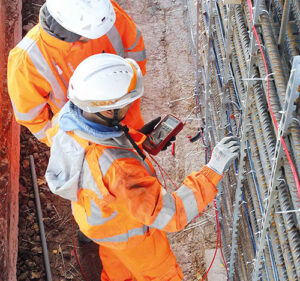London Branch, Uncategorized
The branch’s February technical meeting was held online, to a large audience including many international attendees, and Mr. Phil Low, presented on “Diversified Approach to Vapor Corrosion Inhibitors (VCIs).”
Philip Low is European/Middle East/GCC Business Development Manager Zerust Oil & Gas. He has 25+ years’ experience in the Global Oil
and Gas industry.
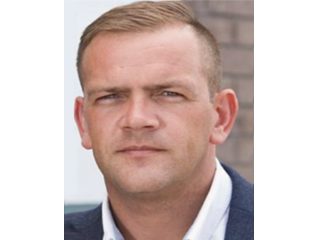
Phil (pictured above) started his presentation by explaining that VCIs are a variety of chemical formulations which prevent corrosion of metals. First patented in 1948 by Shell, VCI’s have evolved into many applications, from powder and liquid forms, to being infused in plastic, oils and greases, and many other delivery methods. He showed a brief animation illustrating how VCIs work and then described the standards and regulations for VCI Use, including:
• NACE TG543: Standard for External Corrosion Control of On Grade Carbon Steel Storage Tank Bottoms
• API 2610 Design, Construction, Operation, Maintenance, and Inspection of Terminal and Tank Facilities, section 12.5 Volatile Corrosion Inhibitors (VCI)
• API 651 Cathodic Protection of Aboveground Petroleum Storage Tanks
• API TR655 Vapor Corrosion Inhibitors for Storage Tanks
Phil then reviewed the many storage tank foundation designs compatible with the use of VCIs for corrosion protection of the tank bottoms, and went into the details of the various methods for validating the effectiveness of VCIs in the field, such as:
• Coupons
• Electrical Resistance Probes
• Ultrasonic Thickness Probes
• Inhibitor Delivery
• Gas Detection
The many VCI application uses in the Oil & Gas industry, were described, including corrosion protection of metals in static, enclosed environments such as:
• Beneath Tank Floors
• ZIF Tape (Impregnated with VCIs) for corrosion under insulation (CUI), scab repairs, and flange protection
• Preservation/Warehousing/Mothballing
• Pipeline Protection and Preservation
• Pipe Casings
• Rust removal/waxes/greases/RP’
Phil concluded that:
• Design and materials help mitigate corrosion
• Cathodic Protection is effective in mitigating corrosion
• Standards and Regulations are looking at new tools to combat corrosion
• Vapor Corrosion Inhibitors are one of those tools
• Field experience indicates that VCIs are effective
There was an extensive question and answer session, and Phil was thanked for his presentation.
The branch AGM was held on 10th March, and the chair, Ben Moorhouse described that the last year had been difficult for everyone, and that the technical presentations had been held virtually, however as the country was getting back to a more normal state, in-person meetings were now being held, of which this will the first. As the virtual meetings had been appreciated by many who could not get to London easily, or were based abroad, technical presentations going forward would be hybrid, in person/virtual events. The branch treasurer, Jim Glynn, then presented the accounts, which highlight that approx £6,500 of our allocation had been returned to head office, as there had been few physical meetings. These were accepted by the floor. The branch committee was then elected with no objection, and Ben then welcomed the new members, Polina Zabelina (who will take over the role of chair), Adam Cliff, Xinming Hu, and Anthony Setiade, and thanked the retiring members, Trevor Osborne and Peter Sinclair, for their contributions to the working of the branch. He also explained he was leaving due to a new work posting.
After the AGM, Ben then gave the usual chair’s presentation, which was on the “Flint Water Crisis – Corrosion, Management and Politics”. The town of Flint in Michigan, suffered one of the worst water crisis in the United States of America in 2014, when the tap water supply began to be poisoned with corrosion products and other toxins. Hundreds of thousands of Flint residents were exposed to dangerous levels of lead and outbreaks of Legionnaires disease that caused deaths and many long-term health problems. This talk focused on the decisions that led to this outcome, the corrosion engineering around ensuring safe water sources, and the importance of ensuring a greater understanding of corrosion issues in relation to environmental issues. Approx. 30 people attended this very interesting talk, including members from S. Africa, Canada, and the Middle East online.
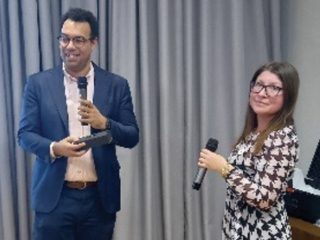
Ben was then presented with a branch pen in thanks for his presentation by the incoming chair, Polina.
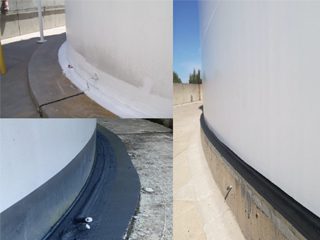
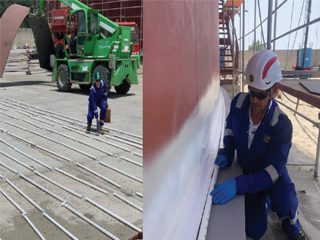
Protection of tank bottoms using Vapor Corrosion Inhibitors (VCIs).
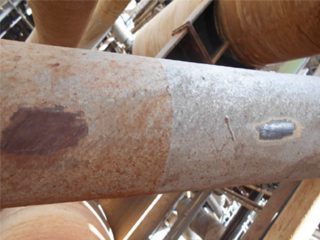
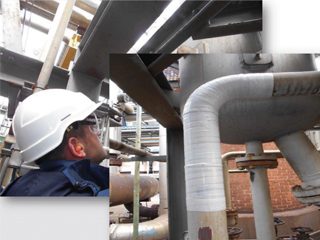
Corrosion Under Insulation (CUI) / scab repair using ZIF tape.

Ben Moorhouse.
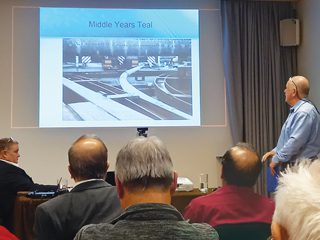
Institute News, London Branch
There was plenty of anticipation for the first in-person technical presentation of the branch since early 2020, a joint meeting with the London Materials Society (the London Branch of IoM3), which was held at the Lancaster Hall Hotel in London. The presentation was also streamed online for those who could not get to London- This was the first time such a hybrid technical talk has been held.
The presentation was delivered by Stephen Shapcott CEng FIMMM MICorr to mark his stepping down as Chair of the London Materials Society (LMS) and was titled, “Meeting Todays Materials Challenges to Enable Low Carbon Hydrogen Production at Scale”.
His presentation began by saying that many countries have made commitments to reduce environmental carbon emissions, and that the UK government has set in law the world’s most ambitious climate change target, cutting emissions by 78% by 2035 compared to 1990 levels. Stephen commented that for countries that are heavily reliant on the use of natural gas to meet the required reduction in carbon dioxide (CO2) emissions, they will need to choose and adopt low or zero carbon technical solutions.
Stephen explained that the UK government are investing in multiple hydrogen (H2) projects to replace much of the current uses of natural gas (methane, CH4), this is because when hydrogen is used as a fuel it does not emit CO2 at point of use, but also because of the versatility of hydrogen for heating, industry, transport, and energy storage. One such project is Hynet in the North West of England which plans to use advanced steam methane reforming combined with Carbon Capture, Utilisation and Storage (CCUS).
Steam-methane reforming takes methane and steam and converts them into hydrogen and carbon dioxide. The main differences between traditional steam-methane reforming technologies verses advanced reforming technologies, which use an Autothermal Reformer (ATR) or a combined Gas Heated Reformer (GHR) and ATR, were covered in the presentation. The traditional vs GHR + ATR routes were compared, showing the higher efficiencies and lower capital cost of GHR + ATR.
The remainder of the presentation focused on the material’s damage mechanisms in the core gas reforming section of both a traditional steam-methane reforming flowsheet and that of a typical GHR + ATR design. The damage mechanisms covered were High Temperature Hydrogen Attack (HTHA), Refectory Degradation, Steam Blanketing leading to Short Term Overheating and Stress Rupture, Creep, High Temperature Oxidation, and Metal Dusting (metal dusting is a destructive form of corrosion that occurs when susceptible materials are exposed to environments with high carbon atmospheres, and leads to the disintegration of the structural metal into dust composed of fine particles of the metal and carbon).
Stephen explained that most of the damage mechanisms in advanced reforming are widely understood and able to be designed for using established practices, however metal dusting is not one of them. Materials and corrosion engineering are central to managing the risks of metal dusting. Therefore, materials and corrosion engineers with deep experience and understanding of metal dusting are critical to GHR + ATR designs, as demonstrated experience not only ensures suitable equipment lifetimes, but also ensures reliability and operating efficiency. The UK was the location of the first GHR + ATR design as part of the ICI Leading Concept Ammonia (LCA) flowsheet at Severnside that was operational for over 20 years, making the UK a world leader in GHR + ATR technology.
There was an active Q&A from the audience both in attendance and online from around the globe. The presentation concluded with Stephen thanking ICorr and LMS for hosting the event and he presented the new Chair of LMS, Caroline Allanach, with the Chain of Office.
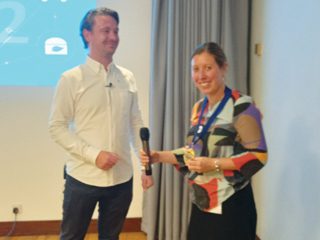
This first hybrid event was considered a success with 60 people attending, roughly half in person and half online, including from overseas, with some from UAE and Pakistan.
The November meeting featured an interesting presentation from Alex Garner, Corrosion Services Ltd, entitled “Lessons learned from 40 years in corrosion protection”. As in the previous month, this talk was held in person and online.
Alex described the highs, with brief mentions of the lows, of his 40-year career in corrosion protection, including CP, material selection, coatings and insulation, for a wide variety of onshore and offshore facilities. His journey started in 1980 and he covered the technical and social challenges of office and site -based work in Europe, Middle East, Asia, Canada, South America, and Australia. as well as the corrosion protection peers encountered over the years, many of which are now his friends. This anecdotal presentation highlighted the pleasures and technical excellence that can be achieved in this industry and Alex hoped that it would encourage younger people tp take up a career in the corrosion protection industry, and not scare too many away from it.
45 people, roughly 50/50 in person/online, attended this very interesting presentation from an experienced practitioner in the field of corrosion protection.
The next meeting of the branch will be on 13thy January 2022 when Dimitrios Mamalopoulos from Cescor UK Ltd will present on. “Life extension of offshore platforms, through retrofit CP design assisted by modeling”. Again, it is intended to hold this in person at the usual venue, Lancaster Hall Hotel, Bayswater, London, and online vie Teams. Final details will be posted on the diary page of the ICorr website.

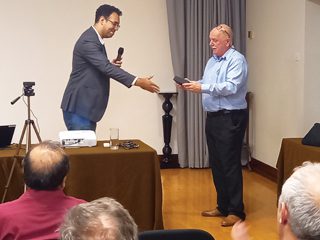
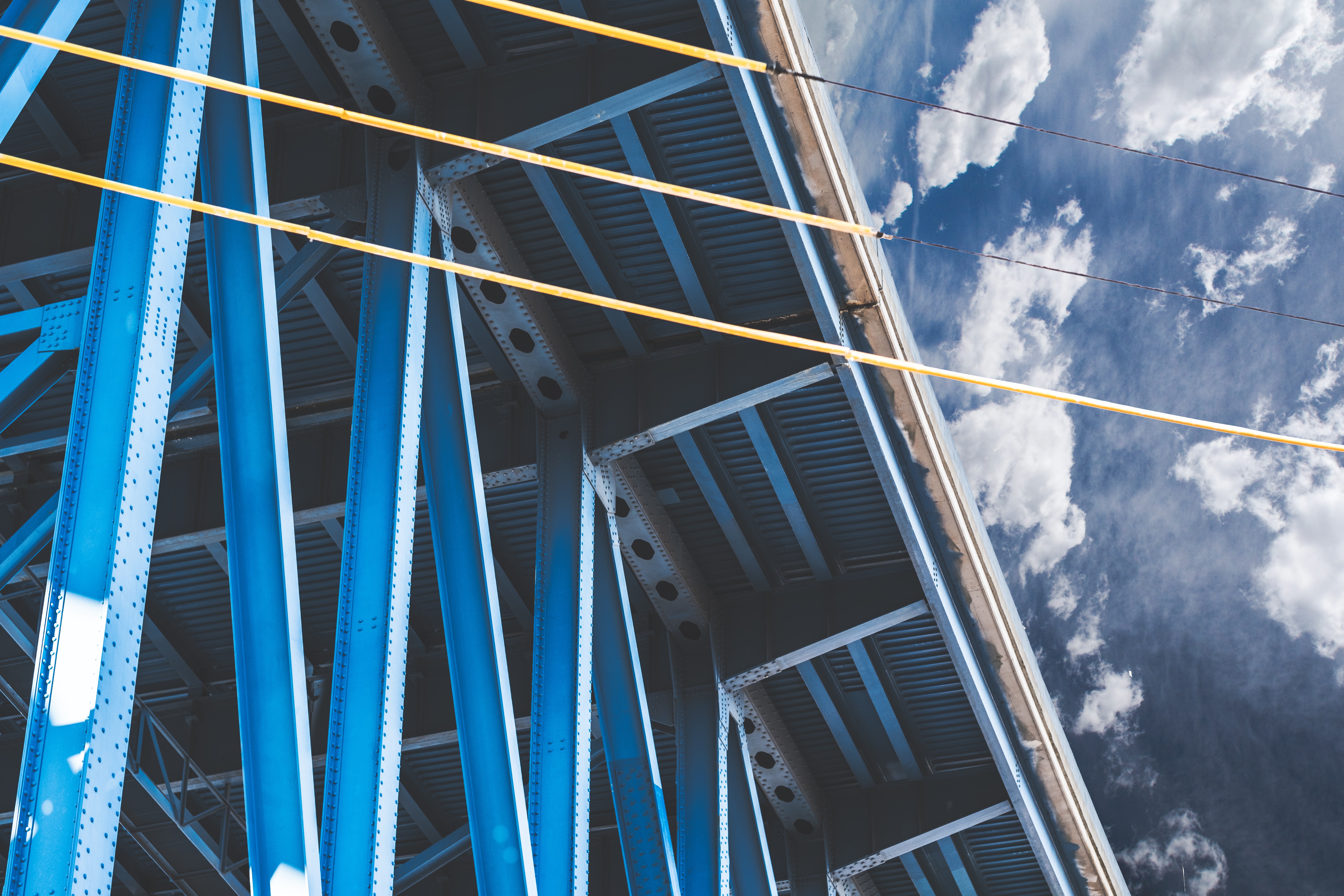
Institute News, London Branch
The November technical talk will be on “Lessons Learned from 40 years in Corrosion Protection”, by Alex Garner, Corrosion Services Ltd. This is planned to be held on the 11th at the Lancaster House Hotel, Bayswater, London, with the meeting starting at 18.00.
The presentation will focus will be on the highs, with brief mentions of the lows, of a 40-year career in corrosion protection, including CP, material selection, coatings and insulation, for a wide variety of onshore and offshore facilities. The journey will start in 1980 and cover technical and social challenges in office and site -based work in Europe, Middle East, Asia, Canada, South America, and Australia. as well as the corrosion protection peers encountered over the years, many of which are now friends. The anecdotal guidance delivered in the presentation will highlight the pleasures and technical excellence that can be achieved in this industry and hopefully will not scare too many people away from it.

